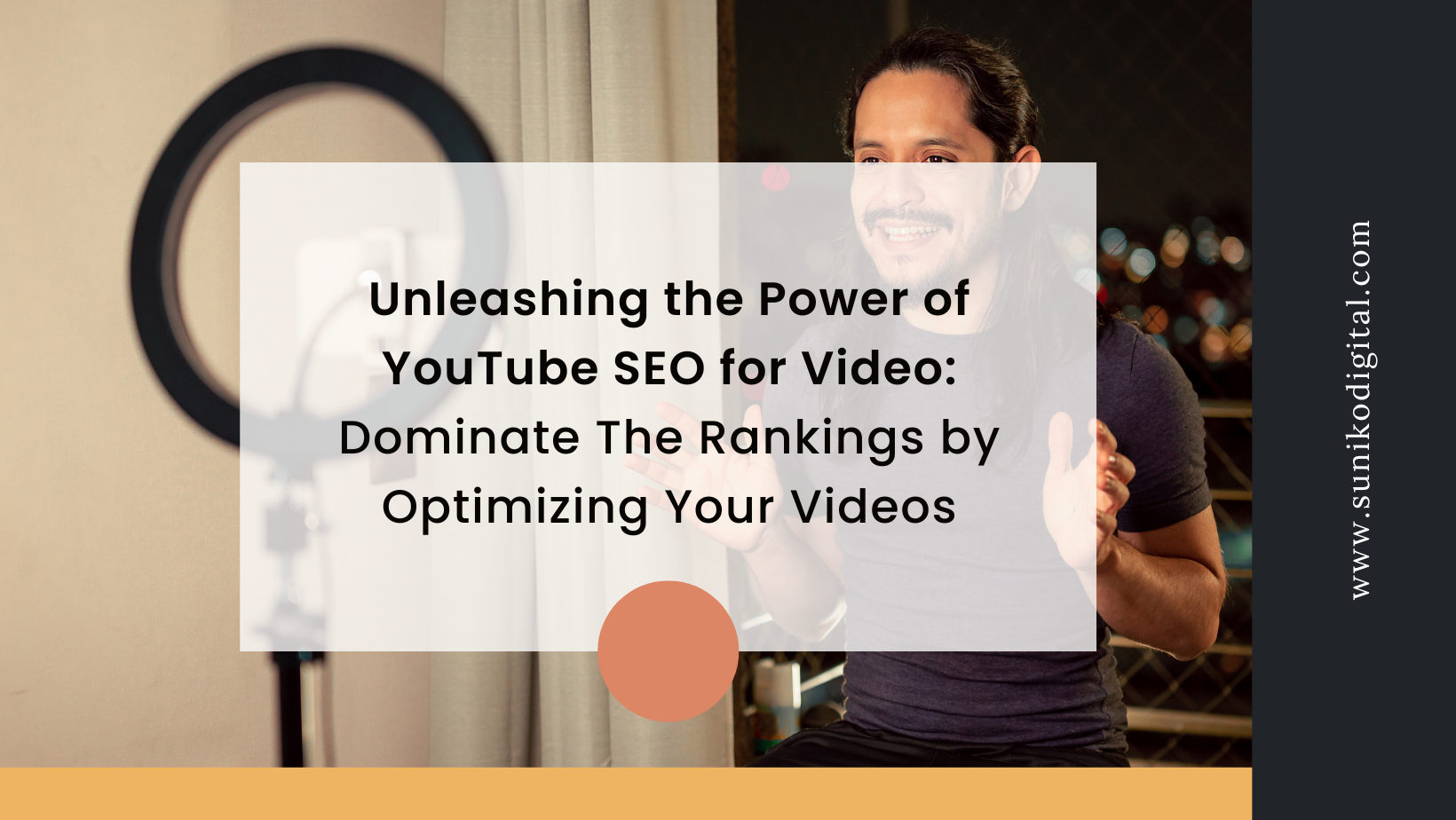The digital landscape is continuously evolving, and to stand out in this competitive world, a solid SEO strategy is crucial—especially for small businesses. At Kipple Digital, we specialize in providing you with top-notch SEO solutions that are tailored to fit the unique needs of your business. Below, we delve into the most effective SEO small business tips that guarantee not only better rankings but also improved conversions and higher customer engagement.
The Basics of Small Business SEO
Defining SEO and Its Purpose
In today’s digital age, having an online presence is crucial for small businesses to stay relevant. However, simply having a website is not enough. With millions of websites on the internet, how can potential customers find your website?
This is where SEO comes into play.
It is the practice of optimizing your website to help you rank higher in search engine results pages (SERPs) such as Google, Bing, or Yahoo. The purpose of SEO is to increase organic traffic to your website by improving its visibility in search results for relevant queries.
For small businesses with limited resources and budgets, SEO provides a cost-effective way to improve their online presence without breaking the bank on advertising or paid promotions. By focusing on SEO strategies such as keyword research and content optimization, you can compete with larger companies that may have bigger marketing budgets.
Choosing Keywords Wisely
One of the most important aspects of SEO is choosing the right keywords. Keywords are phrases or terms that users type into search engines when looking for information related to a specific topic or product/service.
To choose keywords wisely, start by conducting thorough keyword research using a keyword research tool like Google Keyword Planner, SEMrush, Ahrefs, or Ubersuggest. Look for keywords that are relevant to your business and have high search volume but low competition.
Avoid overusing keywords (also known as “keyword stuffing”) in your content because it may negatively impact your rankings and user experience. Instead, focus on creating high-quality content that incorporates relevant keywords naturally.
The Importance of Meta Tags, Titles, and Descriptions
Meta tags are HTML tags that provide information about a webpage’s content to search engines and users. They include title tags (which appear at the top of browser windows), meta descriptions (which provide brief summaries of webpage content), and header tags (which provide structure to content). To optimize your website’s meta tags, ensure that they accurately and concisely describe the content of each page.
Use relevant keywords in title tags and meta descriptions to increase their visibility in search results. Header tags (H1, H2, H3, etc.) should be used to structure your content in a logical and easy-to-read format.
They help both users and search engines understand the hierarchy of information on a webpage. Small businesses need to prioritize SEO as an integral part of their digital marketing strategy.
By understanding the basics of SEO such as keyword research, optimizing meta tags/titles/descriptions, and creating quality content, you can drive more organic traffic to their websites. Remember that SEO is an ongoing process that requires continuous optimization and improvement for long-term success.
On-Page Optimization Strategies & Tips: The Heart and Soul of SEO
Tips for Optimizing Website Content
When it comes to optimizing your website content, there are a few key things to keep in mind. First and foremost, you want to make sure that your content is relevant and informative. This means doing some keyword research to find out what your target audience is searching for, then creating content that addresses those topics in a clear and concise manner.
In addition to crafting high-quality content, it’s important to pay attention to the technical aspects of on-page optimization. This includes using proper header tags (H1, H2, etc.) to structure your content in a logical way, as well as optimizing images with alt tags and descriptive file names.
The Importance of Mobile Optimization and Responsive Design
With more people than ever before accessing the internet via mobile devices, mobile optimization is no longer optional – it’s essential for any small business looking to compete online. Not only does responsive design help ensure that your website looks great on any screen size or device type, but it can also impact your search rankings. By providing a seamless user experience across all devices, you’re not only making it easier for people to access your site – you’re also sending a signal to search engines that you’re committed to providing high-quality content that meets user needs.
Creating User-Friendly Content That Ranks Well
One of the biggest challenges small businesses face when it comes to SEO is finding the right balance between creating content that’s both user-friendly and search engine friendly. On the one hand, you want your content to be engaging and informative – something that people will actually enjoy reading or watching.
On the other hand, you need to make sure that your content is optimized for keywords so that search engines can crawl it effectively. This means incorporating keywords into your content in a natural, organic way – without resorting to keyword stuffing or other black hat tactics.
Internal Linking: The Secret Sauce of On-Page Optimization
Last but not least, it’s important to focus on internal linking as a critical aspect of on-page optimization. By linking to other pages within your site, you’re not only creating a more cohesive user experience – you’re also giving search engines more context and information about the structure of your site.
When done correctly, internal linking can help distribute link equity throughout your site and boost the rankings of individual pages that might otherwise get lost in the shuffle. Whether you’re linking to related blog posts or key product pages, make sure that your links are relevant and add value for users.
Off-page Optimization Techniques
The Harsh Reality of Link Building Strategies
Link building has been a staple of SEO for as long as I can remember. But let’s not sugarcoat it – it’s not easy.
The days of buying links and spamming forums are long gone, and now we’re left with the difficult task of earning quality links. It takes time, effort, and creativity to come up with link-worthy content that other websites will want to link back to.
And even then, there’s no guarantee that they will actually do so. But here’s the thing – even if you do manage to earn a backlink from a high-authority website, it doesn’t necessarily mean that your rankings will skyrocket.
In fact, Google has become increasingly skeptical of unnatural-looking links and may even penalize you for them. So before you start building links left and right, make sure it’s done in a natural way that adds value to both your website and the one linking back to you.
Social Media is More Than Just Posting Memes
In this day and age, having a social media presence is non-negotiable for any business looking to succeed online. But simply posting memes or promotional material won’t cut it anymore.
Social media is about engagement – interacting with your audience on a personal level and creating an emotional connection with them. That being said, social media can also be used as a powerful tool for driving traffic back to your website.
By sharing blog posts or other types of content on your social channels, you can entice users to click through and visit your site. Additionally, having social signals (likes, comments, shares) can also indirectly influence your search engine rankings.
Local Directories: A Hidden Gem?
You may be wondering – why bother with local directories when Google dominates the search engine game? Well, let me tell you – local directories can be a hidden gem for small businesses looking to improve their local search rankings.
By claiming and optimizing your business listing on directories such as Yelp or Angi, you can increase your online visibility and potentially attract more customers in your area. But don’t just stop at the big-name directories – there are plenty of niche-specific ones as well that may cater specifically to your industry or location.
Just make sure that your information is consistent across all listings and that you actively monitor any reviews or ratings left by users. In the end, it’s all about maximizing your online presence and giving yourself every advantage possible in a competitive market.
Technical SEO Considerations
In today’s fast-paced world, website speed and load times matter more than ever.
It’s not just about user experience anymore – search engines now take website speed and load times into account when ranking websites. In fact, Google has stated that page speed is a ranking factor for both desktop and mobile searches.
That’s why it’s important for small businesses to pay attention to their website speed and ensure that their website loads quickly for users. One of the best ways to improve website speed is by optimizing images.
The size of images can greatly impact the load time of a webpage, so it’s important to compress images without sacrificing quality. There are several tools available online that can help with image optimization, such as TinyPNG or Compressor.io.
Another way to boost website speed is by enabling browser caching. Browser caching allows a user’s browser to store files from a website on their computer so that when they visit the site again, the page loads faster because it doesn’t need to download all of the files again.
This can be done by setting an expiration date in the HTTP headers or using a plugin like WP Rocket.
Optimizing Site Architecture
Website architecture refers to how content is structured on a website. A well-structured site can make it easier for search engines to crawl and index your pages, which can lead to better rankings in search results.
One way to optimize site architecture is by creating an XML sitemap and submitting it through Google Search Console. An XML sitemap lists all of the pages on your site and provides important information about each page, such as how often it gets updated and how important it is in relation to other pages on your site.
Another way to optimize site architecture is by using internal linking effectively. Internal links are links within your own site that connect one page to another.
These links help search engines understand the hierarchy of content on your site and also help users navigate through your site. In addition, it’s important to have a clear and well-organized URL structure.
A good URL structure should be easy to read and understand for both users and search engines. This means using descriptive words in your URLs instead of random numbers or symbols.
Overall, website speed and load times as well as site architecture are critical components of technical SEO that small businesses cannot afford to ignore. By paying attention to these factors, you can improve their search engine rankings, provide a better user experience for their website visitors, and ultimately attract more customers to their business.
Advanced SEO Strategies for Small Businesses
Many small businesses can no longer afford to ignore the power of local search.
With Google My Business, you can easily attract local customers and improve your visibility in the search results. Google My Business allows you to manage your online presence in Google Maps and Search, including updating business information, responding to customer reviews, and even connecting with potential customers using messaging features.
To optimize your Google My Business listing, make sure that all of your business information is accurate and up-to-date. This includes your business name, address, phone number, website URL, hours of operation, and photos or videos of your business.
You should also encourage customers to leave reviews on your Google page as this will help to boost your local visibility. Another effective strategy for small businesses is implementing schema markup on their website.
Schema markup is a type of code that helps search engines understand the content on a web page more accurately. By adding schema markup to a website’s HTML code, small businesses can enhance their chances of appearing in rich snippets in search results.
For example, if you’re a restaurant owner implementing schema markup can help you display important information such as menus or reviews directly in the search engine results pages (SERPs). This not only increases visibility but also makes it easier for potential customers to find what they are looking for quickly.
Small businesses should focus on creating comprehensive content strategies that include blogs, videos and infographics among others. With so much competition online today being able to connect with an audience through diverse content formats makes it easier to stand out from competitors.
When creating a comprehensive content strategy ensure that the content produced aligns with SEO best practices including keyword research and optimization techniques like optimizing images with alt tags descriptions among others. When it comes down SEO strategies for small businesses leveraging tools like Google My Business coupled with technical SEO techniques such as schema markup along with incorporating diverse quality content formats like infographics helps give an edge in online visibility over competitors.
Conclusion
SEO is an essential part of any small business’s digital marketing strategy. It helps level the playing field between small businesses and larger corporations by providing a cost-effective way to reach potential customers. From choosing the right keywords to optimizing website content and building quality links, there are numerous ways small businesses can improve their SEO efforts.
One of the most important aspects of SEO is creating quality content that is both user-friendly and search engine friendly. This means writing informative articles, creating engaging videos, and sharing useful infographics that keep visitors on your site longer.
By doing so, you not only improve your search engine rankings, but you also establish yourself as an authority in your industry. In addition to content creation, optimizing for mobile devices is becoming increasingly important in today’s digital landscape.
With more people accessing the internet via their smartphones than ever before, it’s critical that your website is optimized for mobile use. This means having responsive design elements in place that allow your website to adapt to different screen sizes and load quickly.
Don’t forget about local SEO strategies like utilizing Google My Business and local directories to improve your visibility in local search results. By doing so, you can ensure that potential customers in your area can easily find you online.
Overall, implementing these SEO tips for small businesses takes time and effort but it pays off in the long run by driving more traffic to your website and increasing conversions. So don’t be afraid to get started today!
Need help with SEO for your small business? Check out our top notch SEO services. We’ve got you covered!


